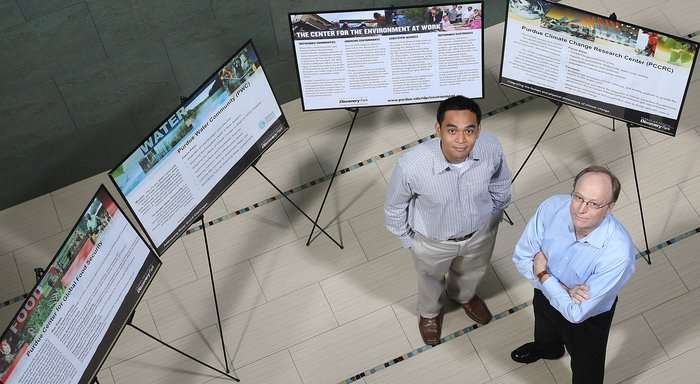For global malnutrition to decline two things must happen: 1. Incomes in developing nations must grow. 2. Agricultural productivity must continue to improve. If both occur, Purdue University researchers say that by 2050 global malnutrition could fall by 84%, as long as climate change does not severely harm agriculture.
Their study has been published in the Australian Journal of Agricultural and Resource Economics and is titled “Global food security in 2050: the role of agricultural productivity and climate change”.
Professor Thomas Hertel said:
“The prevalence and severity of global malnutrition could drop significantly by 2050, particularly in the poorest regions of the world. But if productivity does not grow, global malnutrition will worsen even if incomes increase. Climate change also adds a good deal of uncertainty to these projections.”
Prof. Hertel and doctoral student Uris Baldos developed a combination of economic models to forecast how worldwide food security could be affected by alterations in climate, agricultural productivity, bioenergy, income and population from 2006 to 2050.
Raising ½ billion people out of extreme hunger
By the middle of this century, projected improvements in agricultural productivity combined with income growth could raise over 500 million people out of extreme hunger, the economic models predict.
Population, the current dominant driver of food security, is set to give way to income, a “historical first,” Baldos said. “We expect that the population driver will diminish relative to per capita income in the coming decades, especially in the developing world,” he added.
As people’s incomes increase, the amount of food they eat will grow, and their diets will be “upgraded” with more meat and processed foods being added to staples such as starches and crops.
Millions of people in hunger-stricken regions such as China, Mongolia, South Asia, and sub-Saharan Africa would be lifted above the malnutrition line as their diets increase in calories and protein content.
By 2050, the volume of food consumed per person could rise by approximately 31%, with increases of between 56% and 75% in developing regions with strong income and population growth.
Agricultural productivity growth vital
Hertel says that for these projections to materialize, corresponding increases in agricultural productivity are needed. Productivity is a measure of crop yields in relation to the inputs used in producing them, including fertilizers, labor and land.
Over the last five decades rising global agricultural productivity has improved the availability of food. This trend must continue if we are serious about tackling global malnutrition.
Hertel said:
“There is a clear link between productivity growth in agriculture and the number of malnourished people. Boosting productivity tends to lower food prices, and declines in the cost of food in turn can allow for better nutrition. Income growth alone will not be enough to solve the malnutrition problem.”
For agricultural productivity to improve, investments in agricultural research and development (R&D) are required. Historically, agricultural R&D has driven productivity growth. Spending on R&D must increase for food security to improve, the researchers emphasized.
Hertel said:
“The decisions we make now about funding for agricultural research will have implications for a number of malnourished people in 2050. If agricultural productivity stagnates, there will be far more malnourished people in the future, particularly in regions where chronic hunger is already present.”
The impact of climate change
Hertel and Baldos cautioned that the effects of a changing climate on agricultural productivity remain uncertain.
Farmland in the northern latitudes could benefit by rising temperatures as their growing season gets longer. Also, water efficiency for some crops could improve if carbon dioxide levels in the atmosphere rise.
Population, agricultural productivity and income are the main drivers of global food security, say agricultural economists Prof. Professor Thomas Hertel (right) and Uris Baldos (left).
Climate change is a complicated variable, Hertel explains. “Up to 2050, there could be some pluses for agriculture. But in the longer run, adverse temperatures will likely become overwhelming, and rising carbon dioxide concentrations won’t help after a certain point. Eventually, you drop off a cliff,” he warned.
Population, agricultural productivity and income are greater influential drivers of global food security than climate change, the models indicate. However, according to Baldos, climate change could pose a significant risk to levels of nutrition among people living in the poorest parts of the world. “People living in the most hunger-stricken areas will be the most vulnerable to climate change,” he added.

